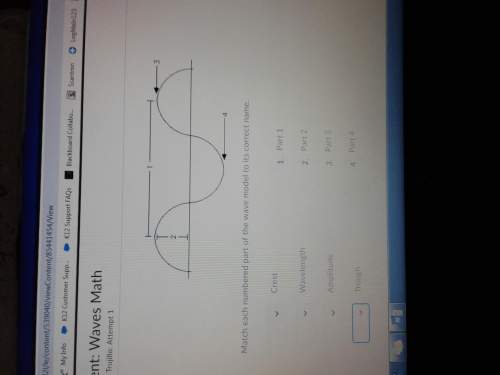
If an object on a horizontal frictionless surface is attached to a spring, displaced, and then released, it will oscillate. The object is displaced a distance 0.120 m from its equilibrium position and released with zero initial speed. Then after a time 0.800 s, its displacement is found to be a distance 0.120 m on the opposite side, and it has passed the equilibrium position once during this interval. a) Find the amplitude. b) Find the period. c) Find the frequency."

Answers: 3


Another question on Physics

Physics, 22.06.2019 05:20
Which statement is true? a. kepler's laws apply only to the motion of earth. b. kepler's laws can be used to predict eclipses. c. kepler's laws are true for a central force that is directly proportional to distance. d. kepler's laws can be deduced from newton's laws of motion and gravity.
Answers: 2

Physics, 22.06.2019 07:00
Critical mass is the of material required to produce a chain reaction. a.) minimum amount b.) atomic mass c.) precise amount d.) maximum amount
Answers: 1

Physics, 22.06.2019 12:40
Estimate the schwarzschild radius (in kilometers) for a mini-black hole formed when a superadvanced civilization decides to punish you (unfairly) by squeezing you until you become so small that you disappear inside your own event horizon. (assume that the your weight is 50 kg)
Answers: 1

Physics, 22.06.2019 14:40
What is the orbital period of a spacecraft in a low orbit near the surface of mars? the radius of mars is 3.4×106m.
Answers: 2
You know the right answer?
If an object on a horizontal frictionless surface is attached to a spring, displaced, and then relea...
Questions





Mathematics, 06.05.2021 02:00



English, 06.05.2021 02:00



Mathematics, 06.05.2021 02:00


Geography, 06.05.2021 02:00


Mathematics, 06.05.2021 02:00


Mathematics, 06.05.2021 02:00


Medicine, 06.05.2021 02:00




